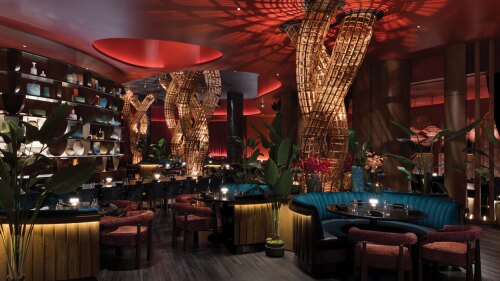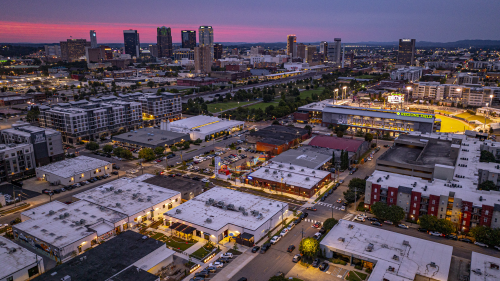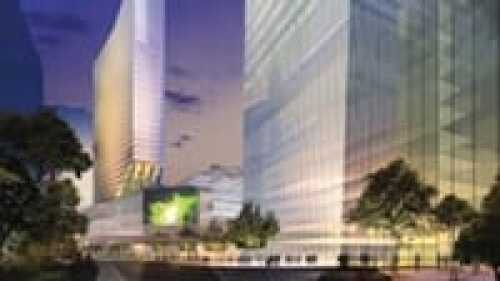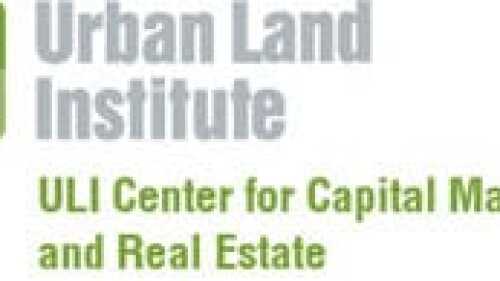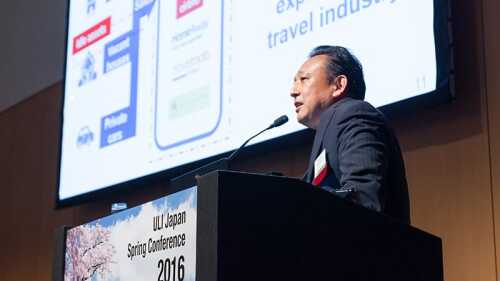Property Types
Hotels and Resorts
The hotel industry in the United States faces complex challenges in 2025, according to Jan Freitag, national director of hospitality analytics for the CoStar Group. During the “State of the U.S. Hotel Industry” presentation at the ULI 2025 Spring Meeting in Denver, Colorado, Freitag highlighted the challenges facing the hotel business amid macroeconomic uncertainty.
Once a sprawling expanse of uncharted land, Las Vegas, Nevada, has evolved into the entertainment capital of the world, a gaming super-hub, and a premier destination for sports. This remarkable transformation didn’t happen overnight; it stemmed from decades of strategic planning, investment, and visionary zoning recommendations.
Las Vegas is unlike any other place in America. Each year it draws more than 40 million visitors to the dazzling casinos and hotels that “turn night into daytime”—and transform the city into a glittering jewel in the desert. With 164,000 hotel rooms, Las Vegas is the largest hospitality market in the U.S.—outpacing Orlando, Florida, the next biggest market, by approximately 15 percent, according to JLL.
Industrial
Standing in the shadow of Regions Field and within earshot of Railroad Park, Birmingham’s Urban Supply hints at what the next chapter of downtown life could look like. Once-quiet brick warehouses are being steadily reimagined into patios, storefronts, and gathering spaces along a new pedestrian alley. Early tenants have begun to open their doors, and programming is slowly bringing people into the district. While the project is still in its early stages, the framework is in place for a vibrant hub that will grow block by block in the years ahead.
What trends are shaping the future of the industrial sector? Four experts from ULI’s Industrial and Office Park Development Council talk about the industrial submarkets and property types that offer the greatest opportunities, challenges developers face in bringing new projects to market, ways artificial intelligence and emerging technologies are reshaping the sector, tenant priorities, and other key trends.
After a quiet first half of 2024, CMBS originations increased 59 percent in Q3 on a year-over-year basis, according to the Mortgage Bankers Association’s Quarterly Survey.
Mixed-Use
As scientists from a variety of disciplines share knowledge in pursuit of new treatments, municipal governments pool resources with the private sector to create biotechnology clusters, universities team with nonprofits, and nonprofits work with for-profit firms to speed the “bench to bedside” process. Read about ten projects that take an innovative approach to fostering interaction and creativity.
Seniors’ housing is moving back into the city and near a transit stop to appeal to baby boomers, the first wave of whom have already turned 65. Rather than being a seniors’ enclave, this new style of housing for seniors is intended to be integrated with the community and offer amenities and convenience. Read more to learn how the Long Beach Senior Arts Colony in California intends to do just that.
Hong Kong–based Swire Properties is planning Brickell CitiCentre (BCC), a nine-acre (3.6-ha) mixed-use development in the heart of Miami’s Brickell Financial District. And in May, Genting Malaysia Bhd announced plans to build Resorts World Miami after buying a 13.9-acre (5.6-ha) piece of land. Read how downtown Miami’s fast-growing residential population has made these projects possible.
Multifamily
While national statistics show gains, particularly for market-rate units, experts warn that in a few markets, there may be too much supply in the pipeline.
The top ten trends in this month’s Barometer point to sparks as well as concerns in the economy, some weak signals in the capital markets, and some glimmer in the weak housing market. Compared with a year ago, 57 percent of the key indicators in the Barometer are better and 43 percent are worse.
Coupled with numerous advances in other green programs, the National Green Building Standard and the Leadership in Energy and Environmental Design (LEED) for Homes Multifamily Midrise Guidance make multifamily energy efficiency and broader environmental performance goals more attainable than ever. Read how two builders are not just preaching green, but living it.
Office
Inside the brokerage giant’s new WELL-certified commercial office space.
Experts discuss the influences of high-tech companies’ preference for “cool” spaces, younger workers’ desire for collaborative and flexible work environments, the shrinking of individual workspaces and increase in amenities, and the future of the office.
Coworking, in which entrepreneurs, startups, and even corporate small teams interact in an open office, is growing exponentially. In the process, it may transform land use.
Residental
Japan welcomed just under 20 million visitors last year and is targeting 40 million arrivals by 2020, the year Tokyo holds the Summer Olympics. ULI members attending the event at the Tokyo Midtown conference center heard that the Japanese government is having trouble keeping up with the pace of change in the tourism industry. For example, due to licensing requirements, 99 percent of Airbnb apartment owners in Japan are breaking the law.
Improving energy efficiency in low-income households could create a ripple effect of health, economic, and environmental benefits for individuals, families, and communities, says a new report on low-income households in 48 of the largest U.S. cities.
Real estate developers around the world are responding to increased consumer interest in cycling and walking as preferred modes of transportation by building projects adjacent to trails, bike paths, bike-sharing stations, and other infrastructure that supports human-powered mobility, according to
Active Transportation and Real Estate: The Next Frontier, a new ULI report.
Active Transportation and Real Estate: The Next Frontier, a new ULI report.
Retail
For decades, civic leaders have tried to revitalize Market Street, San Francisco’s central thoroughfare, only to see their efforts founder. “I sometimes call it the great white whale of San Francisco,” says Eric Tao, managing partner at L37 Development in San Francisco and co-chair of ULI San Francisco. “Every new mayor, every new planning director, every new economic development director has chased that white whale.” This year, however, an international competition of ideas hosted and run by ULI San Francisco, with support from the ULI Foundation, generated fresh momentum for reimagining the boulevard. The competition drew 173 submissions from nine countries and sparked new conversations about the future of downtown San Francisco.
The OAK project began in 2009, when a development firm set their sights on the corner of Northwest Expressway and North Pennsylvania Avenue, the state’s most important and busiest retail intersection. As the region’s only parcel capable of supporting a vertically integrated project of this scale and density, that land represented an opportunity to create something truly special.
As aging retail continue to evolve, one increasingly popular trend has been to redesign malls as town centers—recalling a time when such commercial districts were the heart and soul of a community. Mall–to–town center retrofits are emerging throughout the nation, especially in suburban communities, where pedestrian-friendly, mixed-use environments are highly attractive to millennials now raising families.



